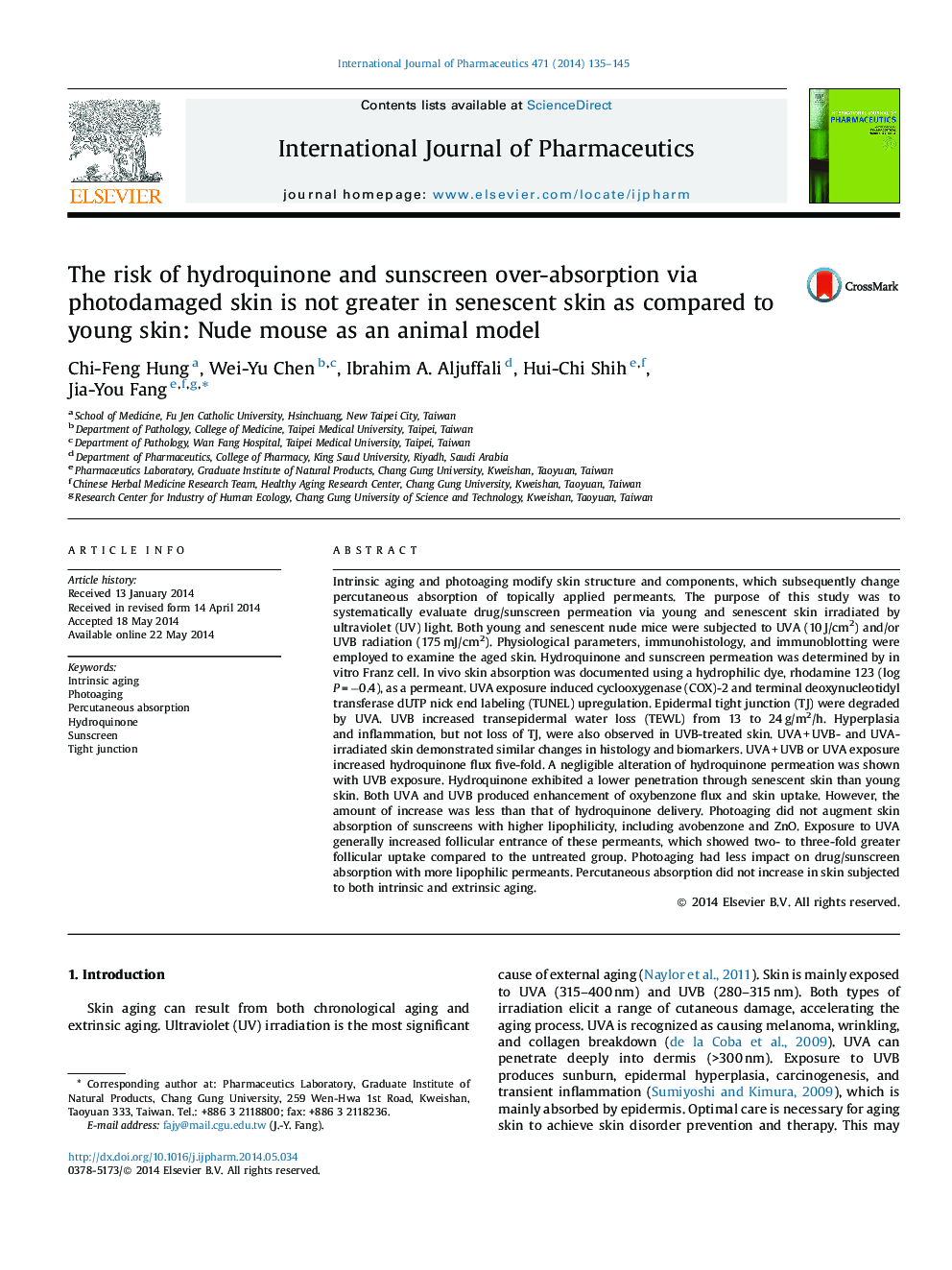| کد مقاله | کد نشریه | سال انتشار | مقاله انگلیسی | نسخه تمام متن |
|---|---|---|---|---|
| 5819310 | 1557355 | 2014 | 11 صفحه PDF | دانلود رایگان |
Intrinsic aging and photoaging modify skin structure and components, which subsequently change percutaneous absorption of topically applied permeants. The purpose of this study was to systematically evaluate drug/sunscreen permeation via young and senescent skin irradiated by ultraviolet (UV) light. Both young and senescent nude mice were subjected to UVA (10Â J/cm2) and/or UVB radiation (175Â mJ/cm2). Physiological parameters, immunohistology, and immunoblotting were employed to examine the aged skin. Hydroquinone and sunscreen permeation was determined by in vitro Franz cell. In vivo skin absorption was documented using a hydrophilic dye, rhodamine 123 (log PÂ =Â â0.4), as a permeant. UVA exposure induced cyclooxygenase (COX)-2 and terminal deoxynucleotidyl transferase dUTP nick end labeling (TUNEL) upregulation. Epidermal tight junction (TJ) were degraded by UVA. UVB increased transepidermal water loss (TEWL) from 13 to 24Â g/m2/h. Hyperplasia and inflammation, but not loss of TJ, were also observed in UVB-treated skin. UVAÂ +Â UVB- and UVA-irradiated skin demonstrated similar changes in histology and biomarkers. UVAÂ +Â UVB or UVA exposure increased hydroquinone flux five-fold. A negligible alteration of hydroquinone permeation was shown with UVB exposure. Hydroquinone exhibited a lower penetration through senescent skin than young skin. Both UVA and UVB produced enhancement of oxybenzone flux and skin uptake. However, the amount of increase was less than that of hydroquinone delivery. Photoaging did not augment skin absorption of sunscreens with higher lipophilicity, including avobenzone and ZnO. Exposure to UVA generally increased follicular entrance of these permeants, which showed two- to three-fold greater follicular uptake compared to the untreated group. Photoaging had less impact on drug/sunscreen absorption with more lipophilic permeants. Percutaneous absorption did not increase in skin subjected to both intrinsic and extrinsic aging.
281
Journal: International Journal of Pharmaceutics - Volume 471, Issues 1â2, 25 August 2014, Pages 135-145
